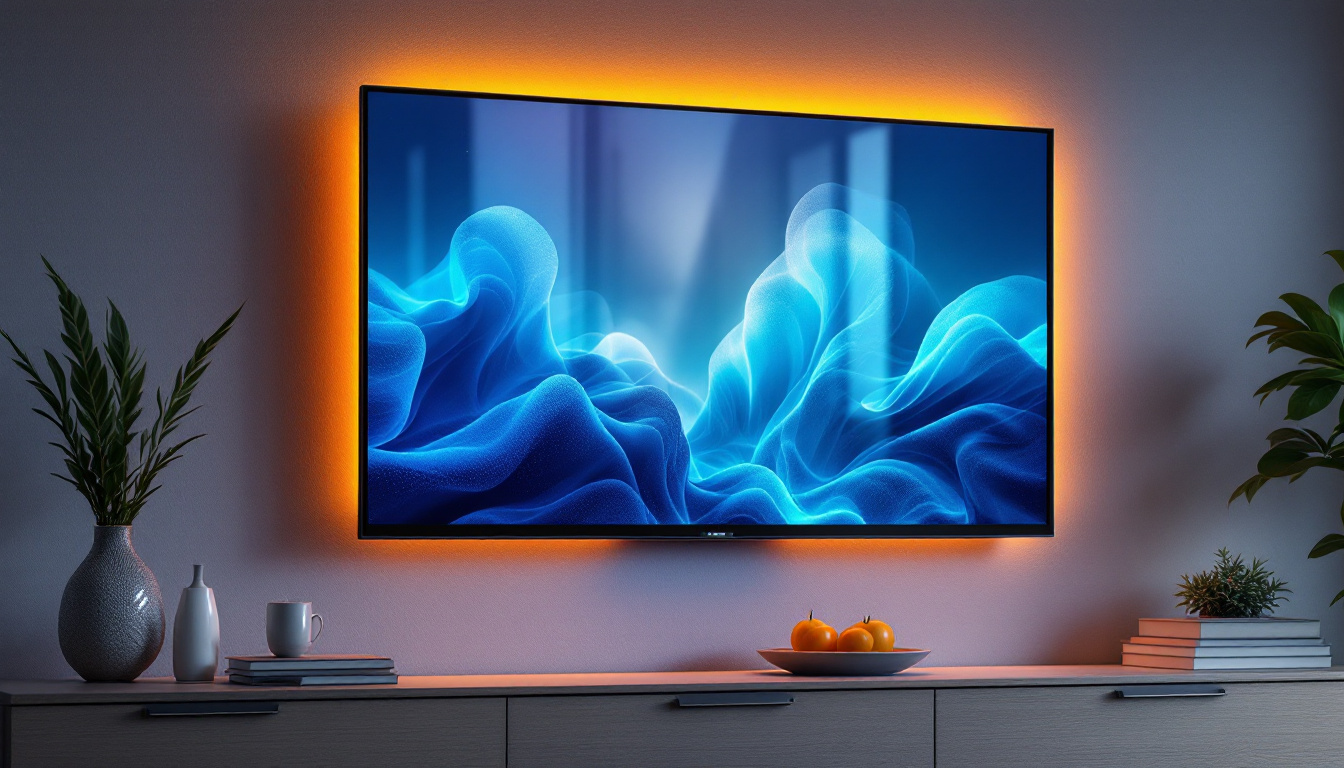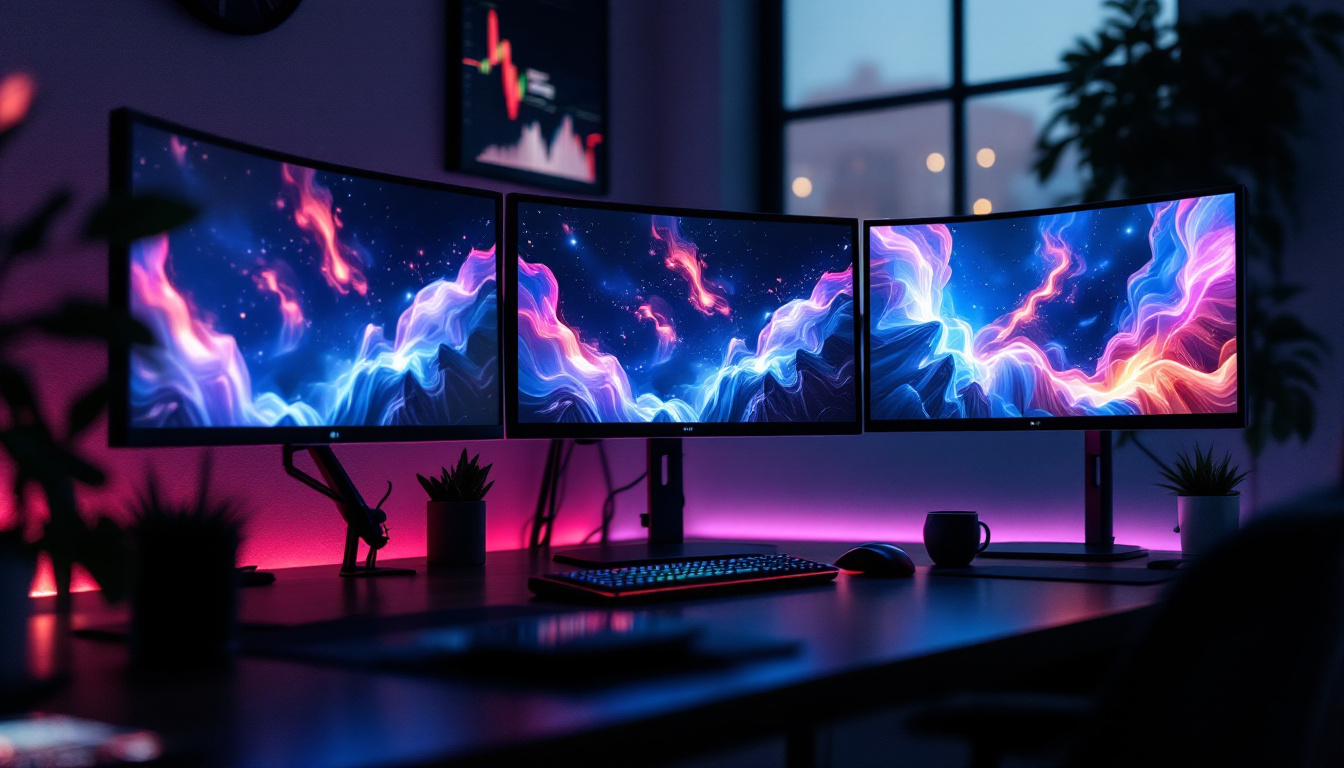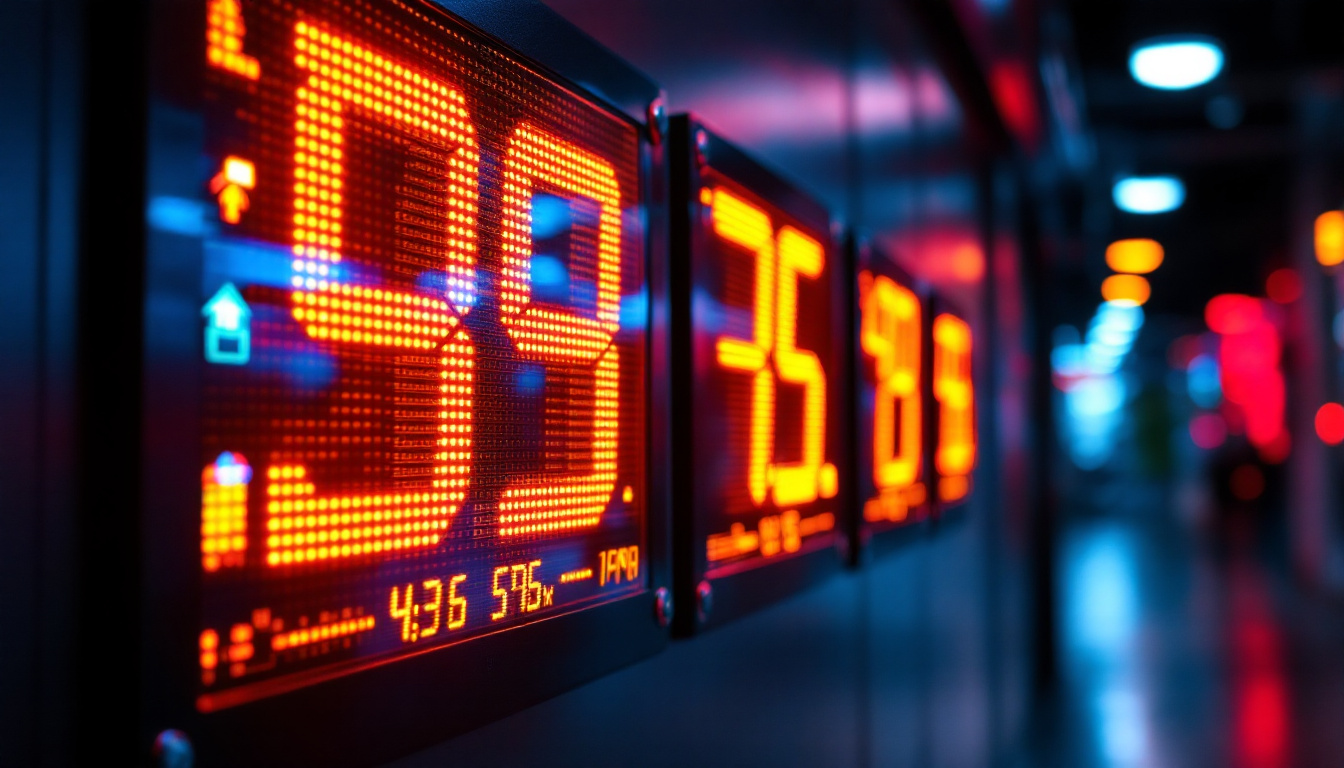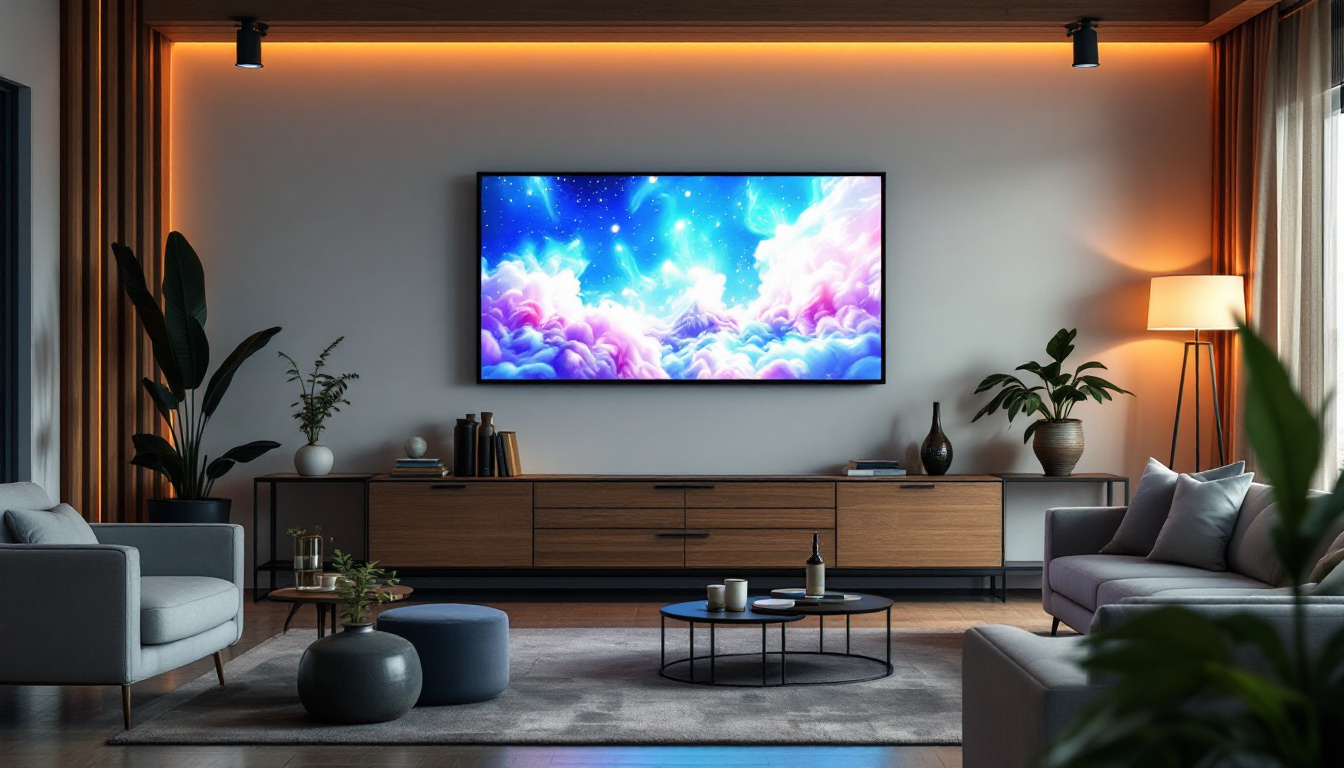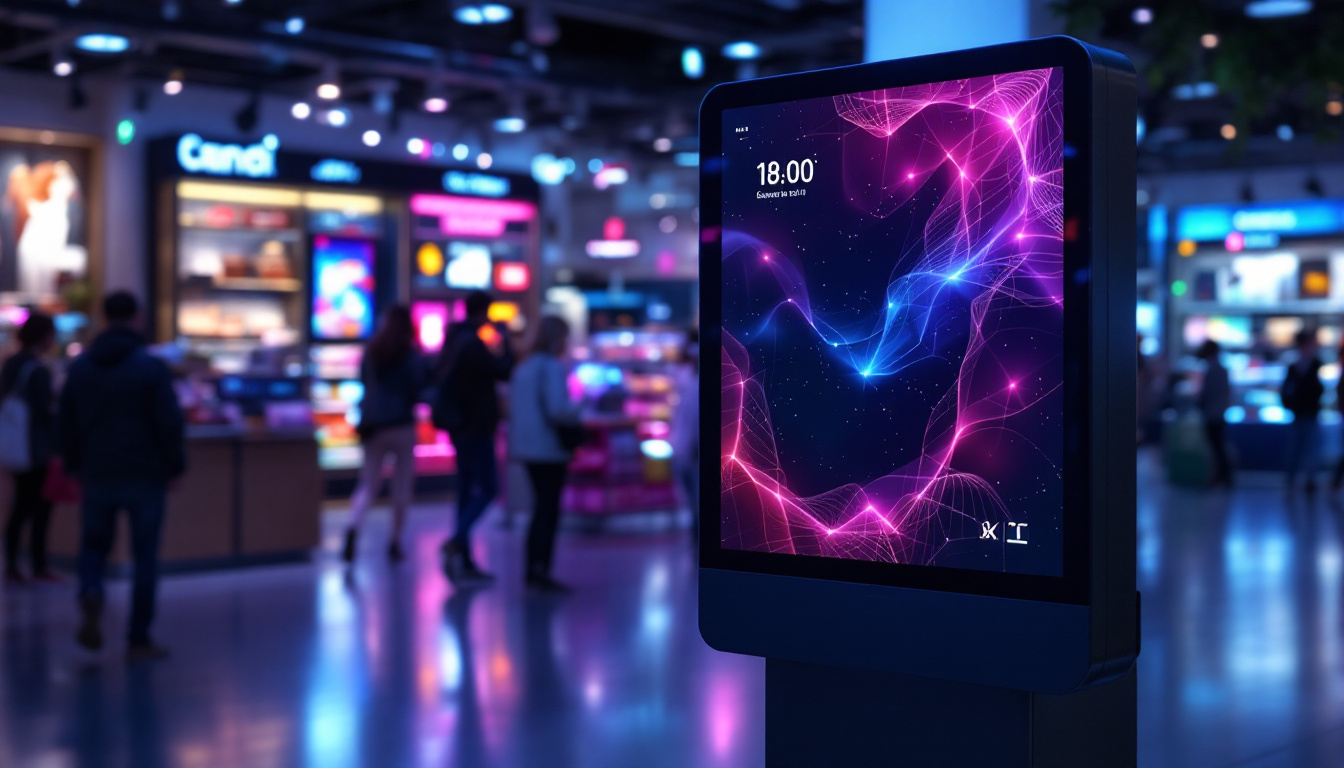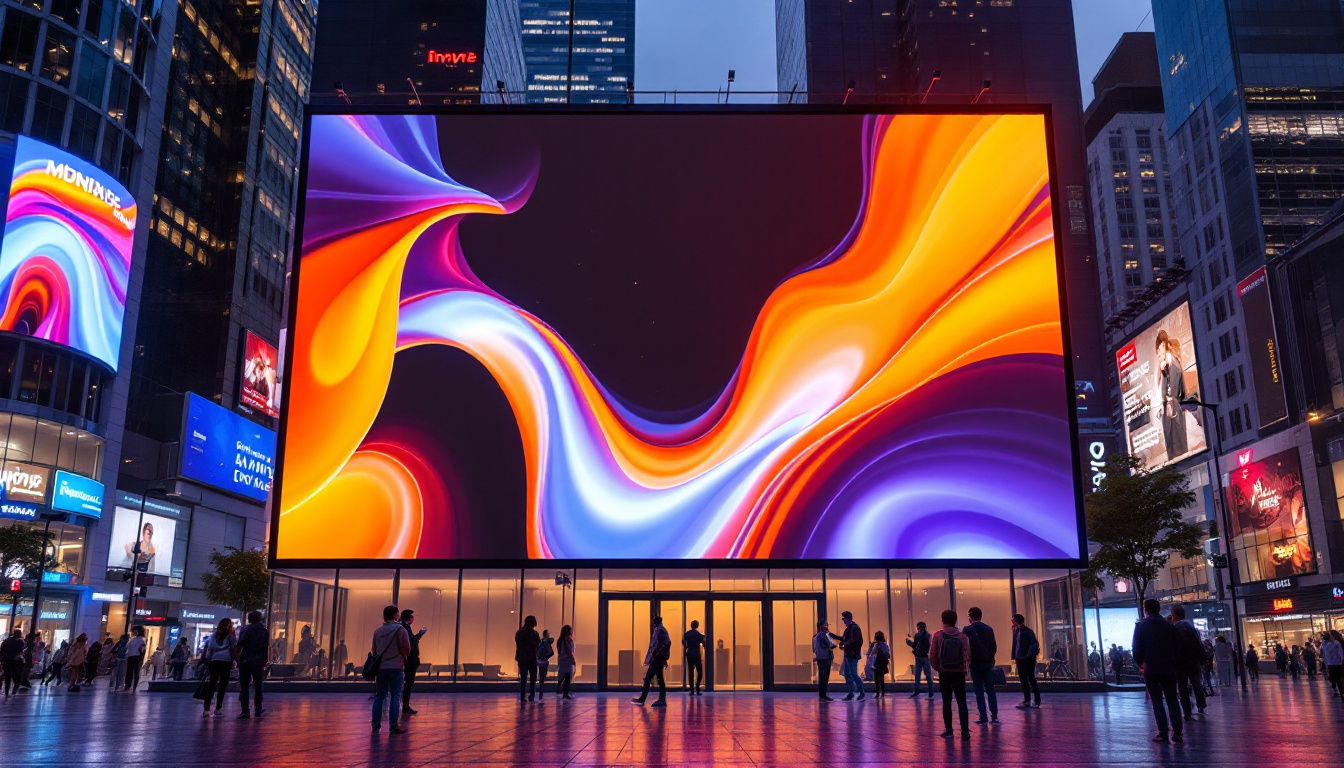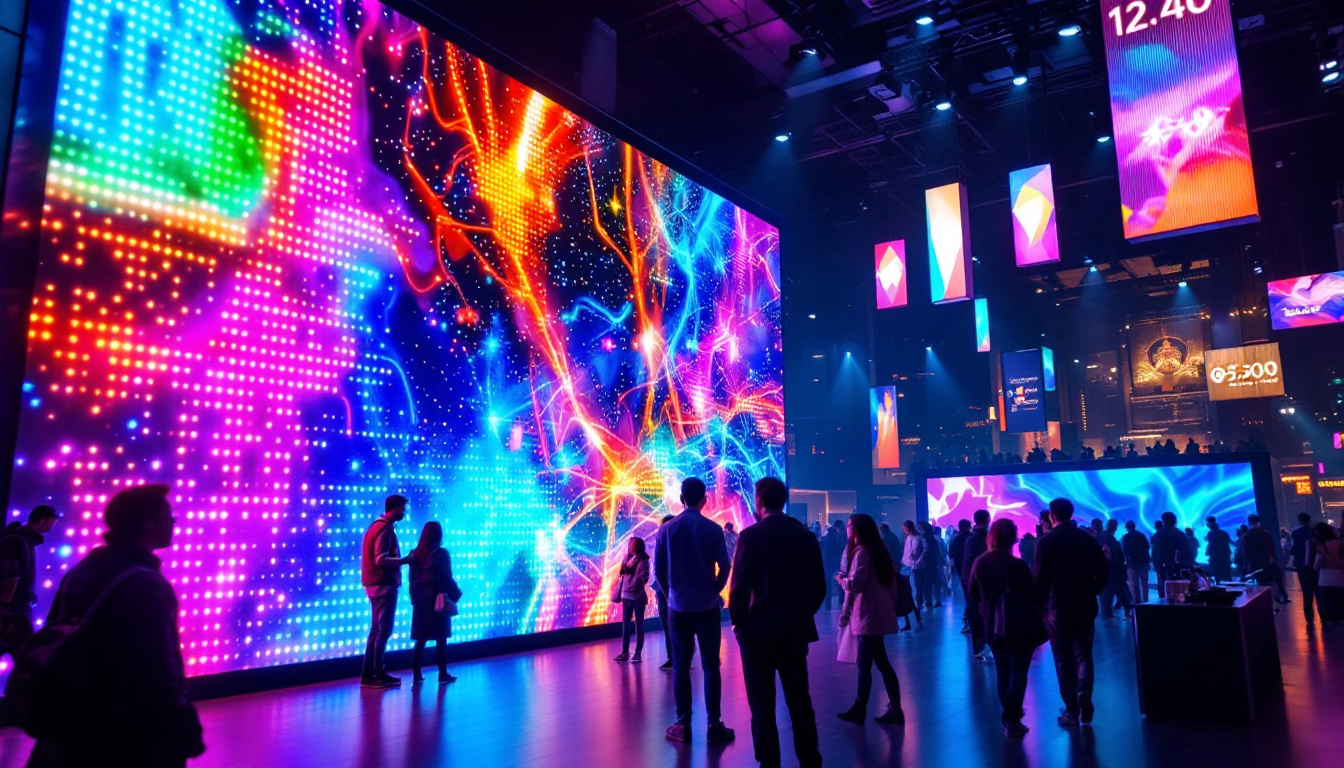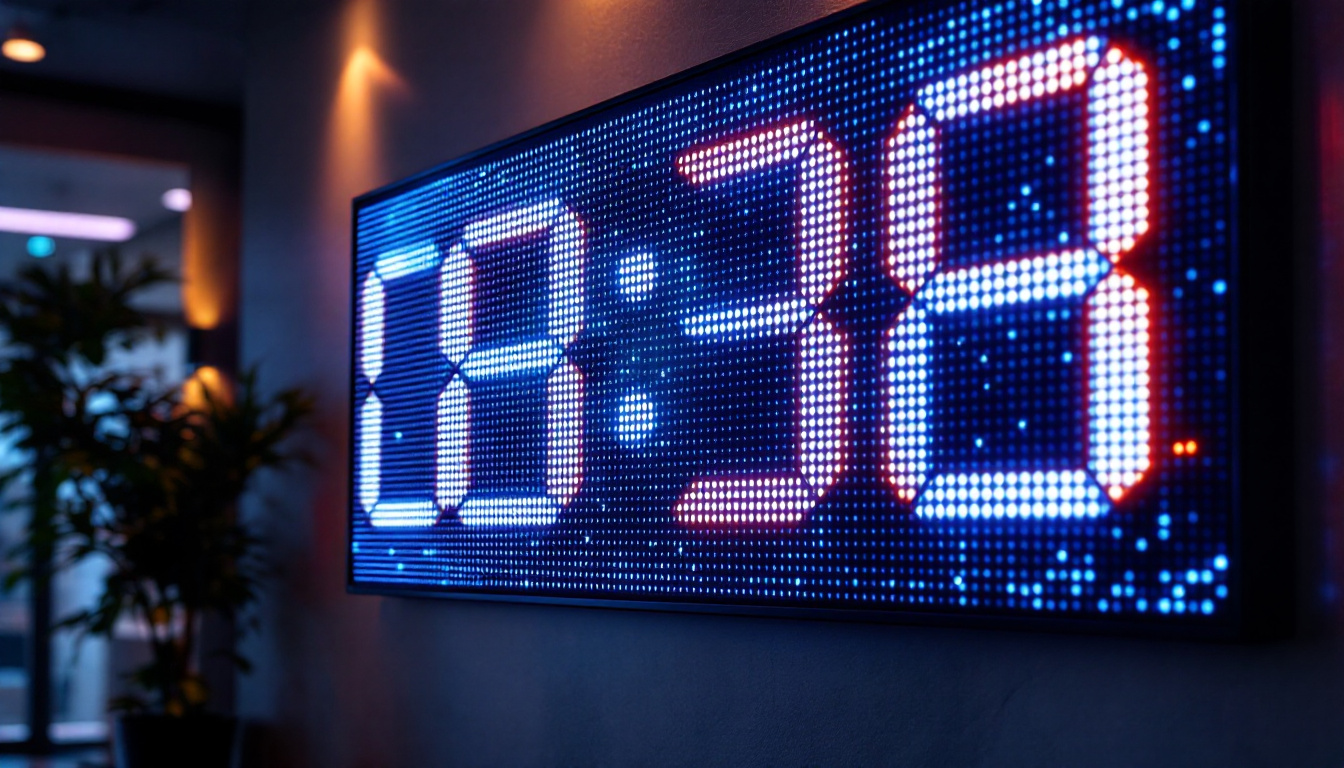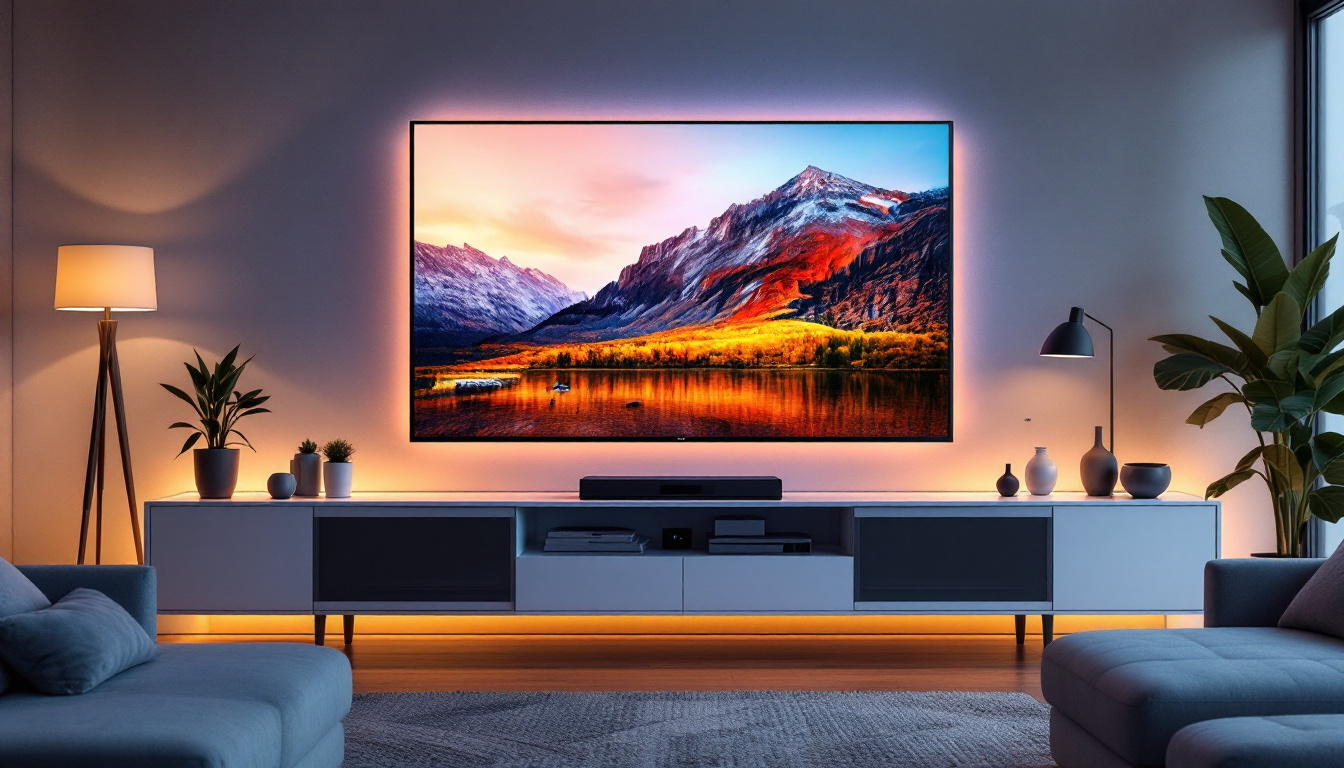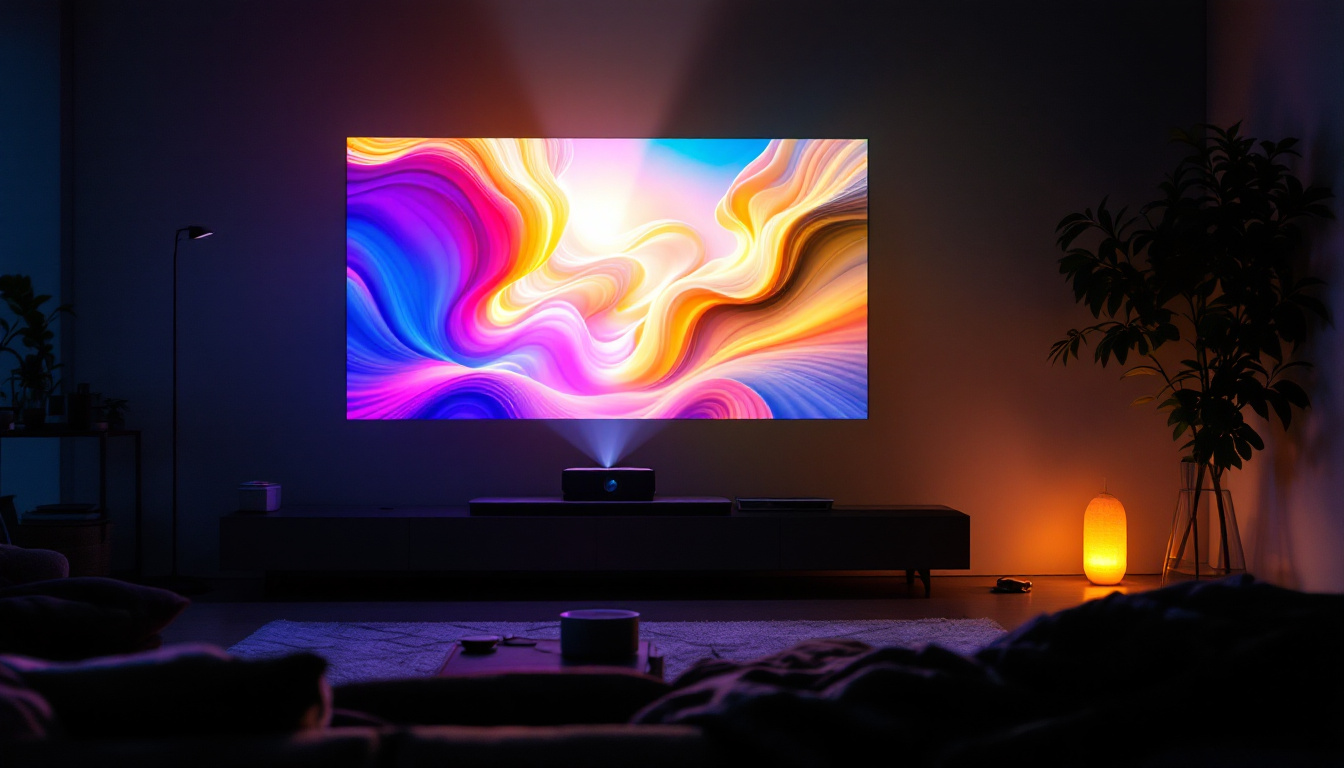Large LCD Screen: LED Display Explained
The evolution of display technology has transformed the way we consume visual content. Among the most significant advancements are large LCD screens, particularly those utilizing LED (Light Emitting Diode) technology. This article delves into the intricacies of LED displays, their advantages, and their applications in various fields.
Understanding LCD Technology
Liquid Crystal Display (LCD) technology has become a standard in the display industry. It utilizes liquid crystals sandwiched between two layers of glass or plastic. The crystals manipulate light to produce images, making LCDs lightweight and energy-efficient.
The Basics of LCD Operation
At the core of an LCD screen is the liquid crystal layer, which does not emit light by itself. Instead, it requires a backlight to illuminate the display. This is where LED technology comes into play. By using LEDs as a backlight source, manufacturers can enhance the brightness and color accuracy of the display.
When an electrical current passes through the liquid crystals, they align in such a way that they either block or allow light to pass through. This process creates the images we see on the screen. The combination of LCD and LED technology results in a display that is not only vibrant but also energy-efficient compared to traditional backlighting methods. Furthermore, advancements in LCD technology have led to the development of various types, such as IPS (In-Plane Switching) and VA (Vertical Alignment) panels, each offering unique benefits in terms of viewing angles and color reproduction. These innovations have made LCDs suitable for a wide range of applications, from smartphones to large television screens.
The Role of LED in LCD Displays
LEDs serve as the backlighting source for LCD screens, providing several advantages over older technologies like fluorescent lamps. One of the primary benefits is improved energy efficiency. LED backlighting consumes significantly less power, which is particularly important for large screens that are often used for extended periods.
Additionally, LED technology allows for better contrast ratios and color reproduction. This is crucial for applications that require precise visuals, such as graphic design, video editing, and gaming. The ability to achieve deeper blacks and brighter whites enhances the overall viewing experience. Moreover, with the introduction of features like local dimming, where specific areas of the backlight can be dimmed or turned off entirely, the dynamic range of images displayed on LCDs has improved dramatically. This means that not only can viewers enjoy vibrant colors, but they can also experience a more immersive visual narrative, particularly in dark scenes of movies or video games. As a result, the integration of LED technology into LCD displays continues to push the boundaries of what is possible in screen technology, making it a popular choice for consumers and professionals alike.
Types of LED Displays
LED displays come in several varieties, each suited for different applications. Understanding these types can help consumers make informed decisions based on their specific needs.
Edge-Lit LED Displays
Edge-lit LED displays are characterized by LEDs placed along the edges of the screen. This design allows for a thinner profile, making these displays ideal for wall-mounted installations. However, the light distribution may not be uniform, leading to potential issues with brightness consistency across the screen.
Despite this limitation, edge-lit displays are popular for their sleek design and affordability. They are commonly found in televisions and monitors, providing a good balance between performance and price. Additionally, advancements in technology have led to improved edge-lit models that incorporate local dimming features, enhancing contrast and overall picture quality. This makes them suitable not only for casual viewing but also for gaming and streaming, where vibrant colors and sharp details are essential.
Full-Array LED Displays
Full-array LED displays feature a grid of LEDs behind the entire screen, allowing for more precise control over lighting. This results in superior contrast and color accuracy, as individual zones of the backlight can be dimmed or brightened based on the content being displayed.
This technology is particularly beneficial for high-definition content, making full-array LED displays a preferred choice for home theaters and professional environments. The enhanced viewing experience is worth the investment for those who prioritize quality. Moreover, full-array displays often come equipped with advanced features such as HDR (High Dynamic Range) support, which further enhances the visual experience by providing a wider range of colors and brightness levels. This makes them an excellent choice for film enthusiasts and gamers alike, who demand the best in visual fidelity.
OLED vs. LED
While discussing LED displays, it is essential to mention OLED (Organic Light Emitting Diode) technology. Unlike LED, which relies on a backlight, OLED displays emit their own light. This allows for even greater contrast ratios and color accuracy, as each pixel can be turned on or off independently.
However, OLED technology can be more expensive and may suffer from issues like burn-in, where static images can leave a permanent mark on the screen. As a result, consumers must weigh the pros and cons of each technology based on their usage scenarios. Furthermore, OLED displays often provide wider viewing angles compared to traditional LED displays, making them ideal for large rooms where viewers may be seated at various angles. The rich blacks and vibrant colors of OLED technology can create an immersive experience, particularly in dark environments, making it a favorite among cinephiles and creative professionals who require precise color reproduction for their work.
Advantages of Large LCD LED Displays
Large LCD LED displays offer numerous advantages that make them suitable for various applications, from home entertainment to professional use.
Energy Efficiency
One of the most significant benefits of LED technology is its energy efficiency. Large displays can consume substantial amounts of power, but LED backlighting reduces this consumption, leading to lower electricity bills and a smaller carbon footprint.
This efficiency is particularly important for businesses that rely on large screens for advertising or presentations, as it can lead to significant cost savings over time.
Enhanced Image Quality
Large LCD LED displays provide enhanced image quality, with better brightness, contrast, and color accuracy compared to traditional displays. This is crucial for applications such as graphic design, photography, and video production, where precise color representation is essential.
The ability to display high-definition content with clarity and vibrancy makes these screens a popular choice for both professional and personal use.
Versatility and Size Options
Large LCD LED displays come in various sizes, making them versatile for different environments. Whether for a home theater, conference room, or digital signage, there is a suitable size and configuration available.
Moreover, advancements in technology have led to thinner and lighter designs, allowing for easier installation and integration into various settings. This flexibility in size and design contributes to the widespread adoption of large LCD LED displays across multiple industries.
Applications of Large LCD LED Displays
The applications of large LCD LED displays are vast, spanning various sectors from entertainment to education and beyond. Each application leverages the unique advantages of this technology.
Home Entertainment
In the realm of home entertainment, large LCD LED displays have become the centerpiece of living rooms. With the rise of streaming services and high-definition content, these screens provide an immersive viewing experience.
Features such as smart connectivity and compatibility with various devices enhance the usability of these displays, allowing users to enjoy movies, games, and shows with stunning visuals and sound quality.
Corporate and Educational Use
In corporate settings, large LCD LED displays are often used for presentations, video conferencing, and digital signage. Their clarity and brightness ensure that information is conveyed effectively, even in well-lit environments.
Educational institutions also benefit from this technology, using large displays in classrooms and lecture halls to facilitate interactive learning. The ability to share multimedia content enhances the educational experience for students and teachers alike.
Advertising and Digital Signage
Digital signage has transformed the advertising landscape, and large LCD LED displays play a crucial role in this evolution. Whether in shopping malls, airports, or public transportation hubs, these displays capture attention with vibrant visuals and dynamic content.
Advertisers can easily update content in real-time, allowing for targeted marketing campaigns that can adapt to changing circumstances. This flexibility makes large LCD LED displays an invaluable tool for businesses looking to engage customers effectively.
Factors to Consider When Choosing a Large LCD LED Display
When selecting a large LCD LED display, several factors should be considered to ensure the best fit for specific needs.
Resolution
Resolution is a critical factor that determines the clarity of the images displayed. Higher resolutions, such as 4K or even 8K, offer more detail and sharper images, making them ideal for high-definition content. For applications requiring precision, such as graphic design or video editing, opting for a higher resolution is advisable.
Refresh Rate
The refresh rate of a display indicates how many times per second the image is updated. A higher refresh rate results in smoother motion, which is particularly important for gaming and fast-paced video content. For general use, a refresh rate of 60Hz is typically sufficient, while gamers may prefer displays with rates of 120Hz or higher.
Connectivity Options
Modern displays come with various connectivity options, including HDMI, DisplayPort, and USB-C. Ensuring that the display has compatible ports for the devices it will connect to is essential. Additionally, features like built-in Wi-Fi or Bluetooth can enhance usability by allowing wireless connections.
Conclusion
Large LCD LED displays represent a significant advancement in display technology, offering a combination of energy efficiency, enhanced image quality, and versatility. Their applications span numerous industries, making them an essential tool for both personal and professional use.
As technology continues to evolve, the future of large LCD LED displays looks promising, with ongoing improvements in resolution, color accuracy, and connectivity options. Whether for home entertainment, corporate presentations, or dynamic advertising, these displays are poised to remain at the forefront of visual technology for years to come.
Discover LumenMatrix’s Innovative LED Display Solutions
Ready to experience the future of display technology today? LumenMatrix is at the forefront of LED display innovation, offering a wide array of solutions tailored to meet your visual communication needs. From captivating Indoor LED Wall Displays to dynamic Outdoor LED Wall Displays, and from versatile Vehicle LED Displays to sleek LED Poster Displays, our products are designed to elevate your brand’s visibility. Explore our cutting-edge LED Sports Displays, interactive Floor LED Displays, and the transformative All-in-One LED Display. For a truly unique presentation, consider our Custom LED Display or the stunning LED Transparent Display. Embrace the revolution in visual storytelling with LumenMatrix. Check out LumenMatrix LED Display Solutions and transform your space into a mesmerizing visual experience.




